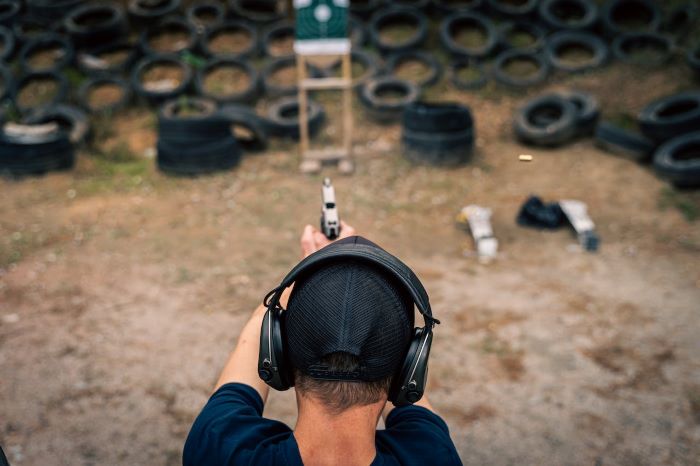In the realm of firearms, modern rifles represent a fusion of innovation, precision, and versatility. These firearms, embodying centuries of technological advancement, cater to a wide array of applications – from military and law enforcement use to sports shooting and hunting. Here we will discuss about the intricacies of modern rifles, exploring their types, technological advancements, applications, and safety considerations, providing a comprehensive overview for enthusiasts and professionals alike.
Types of Modern Rifles
Modern rifles come in various forms, each designed for specific purposes. The most prominent types include:
- Bolt-Action Rifles: Renowned for their accuracy and reliability, bolt-action rifles are a top choice for hunters and target shooters. Their simple yet effective mechanism involves manually operating the bolt to chamber a round and eject spent cartridges. A classic example in this category is the Marlin 1895, known for its robust construction and historical significance.
- Semi-Automatic Rifles: These rifles automatically chamber a new round after each shot, allowing for rapid firing. They are popular in both sporting and tactical contexts, with the AR-15 being a notable example.
- Automatic Rifles: Typically reserved for military and law enforcement, these rifles can continuously fire rounds as long as the trigger is pressed and there is ammunition in the magazine. Examples include the M16 and AK-47.
- Precision Rifles: Designed for utmost accuracy, precision rifles are used in long-range shooting sports and military sniping. They often feature advanced optics and specialized ammunition.
Technological Advancements
Modern rifles have benefited significantly from technological advancements. Key improvements include:
- Materials: The use of lightweight, durable materials like polymer and aerospace-grade aluminum has enhanced the portability and durability of rifles.
- Optics: Advances in optics have revolutionized rifle accuracy. Modern scopes with variable magnification, rangefinders, and night vision capabilities allow for precise targeting at various distances and under different conditions.
- Modularity: Many modern rifles feature a modular design, allowing users to customize components like stocks, grips, and barrel lengths to suit their specific needs.
- Ammunition: Innovations in ammunition have led to rounds with greater accuracy, range, and stopping power, catering to different shooting disciplines and uses.
Applications
The applications of modern rifles are as diverse as their designs:
- Military: Rifles are a staple in armed forces worldwide, used for combat and peacekeeping missions.
- Law Enforcement: Police and tactical units utilize rifles for their precision and effectiveness in neutralizing threats.
- Hunting: Bolt-action and semi-automatic rifles are popular among hunters for their reliability and adaptability to different game and terrains.
- Sport Shooting: Competitive shooting sports, such as biathlon and long-range shooting competitions, rely on the precision and consistency of modern rifles.
- Personal Defense: Many individuals choose rifles for home defense due to their stopping power and accuracy.
Safety Considerations
Handling modern rifles requires strict adherence to safety protocols:
- Training: Proper training is essential for safe rifle handling. This includes understanding the rifle’s mechanics, safe handling practices, and shooting fundamentals.
- Storage: Rifles should be stored securely to prevent unauthorized access. This often involves using gun safes or lockable cases.
- Maintenance: Regular maintenance ensures the rifle’s reliability and safety. This includes cleaning, inspecting for wear, and replacing parts as needed.
- Legislation: It’s crucial to be aware of and comply with local and national firearm laws, which can vary significantly.
Ethical and Social Implications
The use of modern rifles comes with ethical and social considerations. Responsible ownership and use are paramount, especially in light of debates over gun control and firearm-related violence. Advocates emphasize the importance of education, training, and adherence to legal frameworks to mitigate risks and ensure responsible usage.
Conclusion:
Modern rifles, with their diverse types, technological advancements, and wide range of applications, play a significant role in various fields. Whether for defense, sport, hunting, or law enforcement, these firearms demand respect, responsibility, and a deep understanding of their capabilities and limitations. As technology continues to evolve, so will the world of modern rifles, presenting new opportunities and challenges for users and society as a whole.
Navigating this world requires a commitment to safety, continuous learning, and an appreciation for the remarkable engineering behind these tools. With the right approach, modern rifles can be safely and effectively integrated into their respective domains, contributing to their intended purposes while respecting the broader implications of their use.




